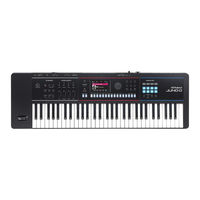Roland JUNO-D8 Manuals
Manuals and User Guides for Roland JUNO-D8. We have 2 Roland JUNO-D8 manuals available for free PDF download: Reference Manual, Startup Manual
Roland JUNO-D8 Reference Manual (59 pages)
Brand: Roland
|
Category: Electronic Keyboard
|
Size: 7 MB
Table of Contents
Advertisement
Roland JUNO-D8 Startup Manual (20 pages)
Brand: Roland
|
Category: Synthesizer
|
Size: 3 MB

